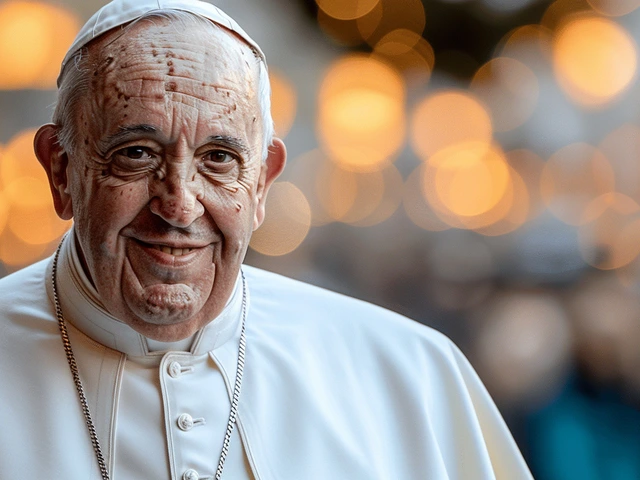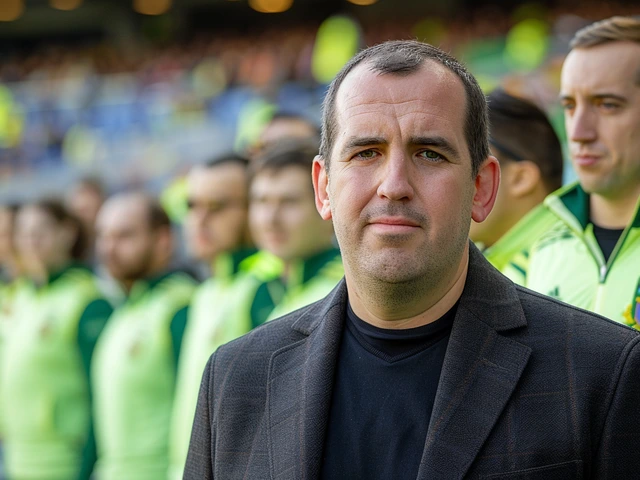Decoding Gen Z's Language: How Today’s Teenagers Perfectly Capture Their World
Language constantly evolves, adapting to new generations and their experiences. Enter Gen Z, the young cohort born roughly between the late 1990s and early 2010s. Their slang reflects the unique challenges and idiosyncrasies of their time, providing a window into their world. It is distinct not only in its vocabulary but also in its underlying meanings, tailored to articulate the realities of an era marked by rapid technological advancement, shifting social norms, and widespread skepticism.
Observing these linguistic shifts, it becomes evident that slang serves multiple purposes. It acts as a badge of identity, allowing teenagers to quickly identify one another by generation, race, or ideology. Beyond that, it compresses complex thoughts and feelings into succinct expressions, making communication faster in a world driven by immediacy and brevity.
Take the term 'mid,' for instance. It's a versatile word used by teens to describe things that are average or slightly below – events, experiences, or even people that fail to excite or satisfy. This expression captures the sense of pervasive mediocrity that many feel defines modern life. In an age where everyone wants to stand out but often fails due to various societal pressures, 'mid' succinctly labels the nagging sense of 'just okay.'
Another intriguing term in the Gen Z lexicon is 'glazed.' To be 'glazed' means to spin a positive narrative out of less-than-ideal circumstances. It's a survival tactic for navigating a world where social media often projects unnaturally perfect versions of life, and sports commentators might sugarcoat dismal performances. The art of glazing highlights a deeper societal tendency to embellish information, to project positivity even when underlying issues remain unresolved. It's a modern-day coping mechanism, a way to manage appearances and maintain mental peace amid chaos.
Understanding these terms from my own son's everyday language brings home the realization that Gen Z has ingeniously crafted a dialect to capture the complexities and nuances of their world. Their language is a reflection of a reality where traditional institutions crumble, trust erodes, and a shared sense of purpose diminishes. Each word and phrase offers a mirror to the intricate social, political, and economic landscapes they navigate daily.
For instance, 'mid' doesn't just describe mediocrity; it encapsulates a broader sentiment of resignation. It speaks to a generation raised amid economic recessions, climate crises, and political gridlock. The word becomes a shorthand for their perceived disenfranchisement and the systemic issues they inherit. Similarly, 'glazed' isn't merely about positivity; it's a defense mechanism against the relentless tide of bad news and unattainable ideals. The term reveals an awareness of hypocrisy and an inherent desire to find optimism, no matter how superficial it might seem.
In extending these observations, we can also consider how technology plays a pivotal role in shaping Gen Z’s language. The proliferation of social media platforms like TikTok, Snapchat, and Instagram has fomented environments where brevity and visual storytelling reign supreme. Emojis, memes, and shorthand expressions often carry as much weight as full sentences. This linguistic shift influences not only how Gen Z communicates with one another but also how they perceive and interact with the world around them.
Moreover, the rapid exchange of information facilitated by digital technology means that slang terms evolve swiftly. A word that is 'in' today might become 'mid' tomorrow. In this fluid dynamic, new terms emerge to reflect on-the-ground realities almost in real-time. This responsiveness offers an adaptive edge, allowing Gen Z to continually reframe their experiences in a language that feels immediate and relevant.
The sociopolitical climate they grow up in further accentuates these linguistic changes. For a generation that has seen political upheaval, social justice movements, and economic instability all before reaching adulthood, their language often carries weighty subtexts. Words like 'woke,' 'ghosting,' and 'FOMO' (fear of missing out) pack intricate concepts into manageable expressions. They allow quick discussions of intricate issues without the need for exhaustive explanations.
While these terms may seem superficial or incomprehensible to older generations, they offer a succinct and poignant lexicon that navigates the tension between authenticity and appearance. This balancing act of being genuine while managing one’s image is essential in a world that is increasingly transactional and digital. Social validation, after all, becomes just as much about the narratives one constructs as the realities one lives.
One must also consider the cultural influences that pervade Gen Z’s linguistic landscape. With globalization and the internet collapsing geographical boundaries, young people are exposed to a myriad of cultures and languages, shaping a polyglot slang that borrows from various sources. This cross-cultural pollination enriches the vocabulary, making it more dynamic but also more fragmented. It's a linguistic melting pot that requires ever-more agility to decode.
Furthermore, education and media also contribute to this evolving vernacular. Influences from popular television shows, movies, literature, and even video games leave their mark, embedding new terms into the everyday conversations of teenagers. As these cultural products often grapple with societal issues, they provide ready-made language that resonates with the youth and encapsulates their collective consciousness.
It’s crucial, however, to not over-simplify or generalize the ways in which Gen Z communicates. While slang offers insights into shared experiences, it does not account for the diversity within the generation. Factors such as socioeconomic status, geographical location, and cultural background all play into the layers of meaning behind these words. An expression popular in urban settings might be 'mid' in rural areas, highlighting the nuanced variations that exist even within a single generational cohort.
As parents, educators, and observers, it’s essential to acknowledge and respect this evolving language. It offers invaluable insights into the worldview of a generation navigating unprecedented challenges. By understanding and, where possible, adopting this linguistic framework, we can build stronger intergenerational connections and foster a sense of empathy and unity. It’s a small but vital step towards bridging the generational divide that often feels insurmountable.
In conclusion, the language of today’s teenagers is far more than mere words; it’s a nuanced code that encapsulates their lived experiences. With terms like 'mid' and 'glazed,' Gen Z captures the essence of a world increasingly defined by mediocrity and embellishment. This lexicon reflects their challenges, their creativity, and their resilience. In understanding this language, we open doors to deeper intergenerational dialogue and collective problem-solving. It stands as a testament to their ability to adapt, innovate, and find meaning in an ever-complex world.





